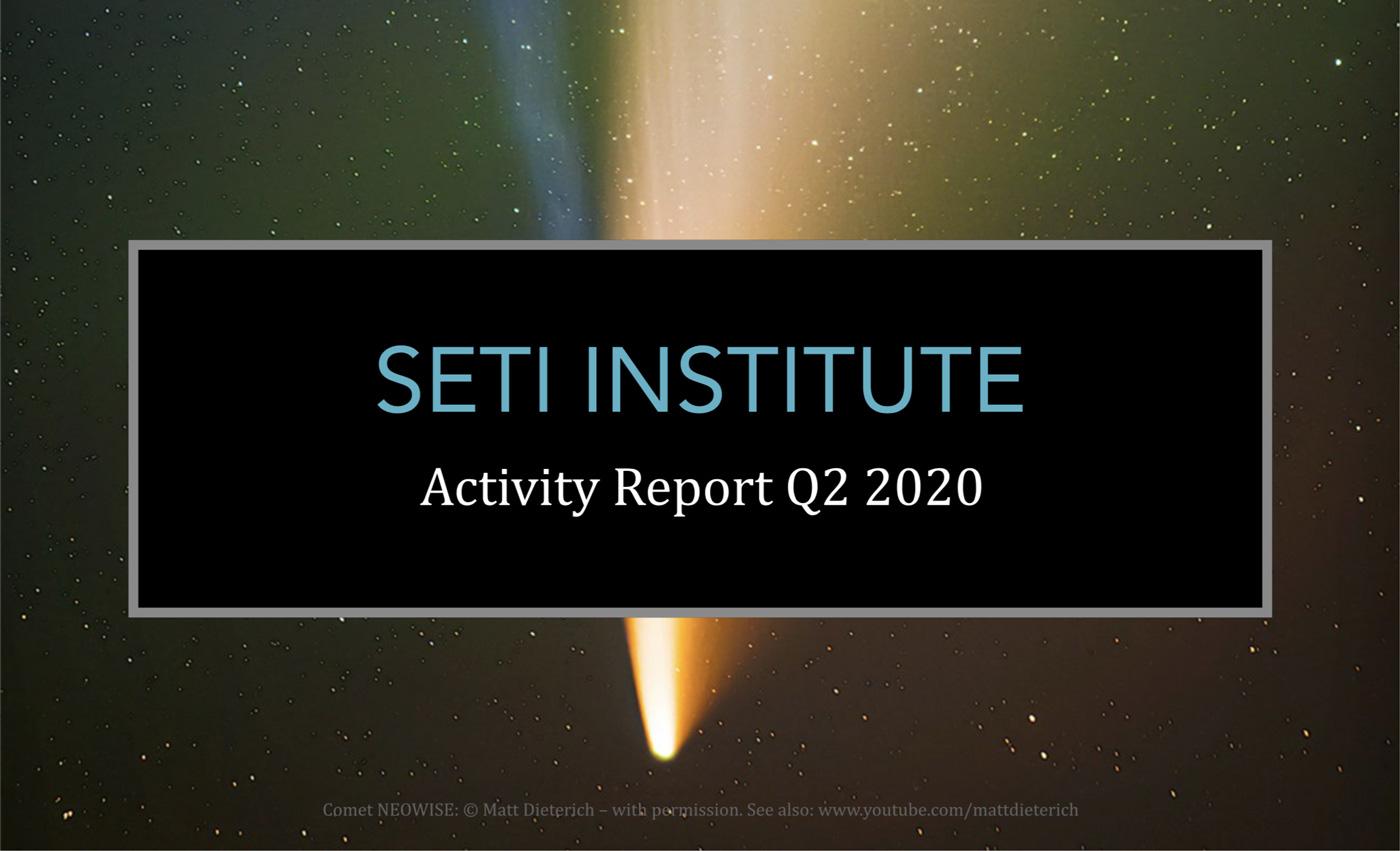
Since March 16, 2020 the SETI Institute headquarters in Mountain View, CA has been shut down. Other organizations where our scientists may have labs or office space, such as NASA Ames Research Center have also been closed. While the COVID 19 pandemic has posed many challenges, both professional and personal, the work of the SETI Institute has continued. In what is now known as the pandemic pivot, collaborative projects, programs, conferences, meetings and events have gone virtual. Like people throughout the world we have mastered Zoom meetings, virtual backgrounds, work-from-home wardrobes, and interruptions from family members and pets. Most of all, we have gotten the work done, as illustrated by the achievements detailed in our activity report covering the period from March-June 2020.
Here are some highlights:
Peer-reviewed publications in scientific journals including:
- Towards Determining Biosignature Retention in Icy World Plumes, Life (Kathryn Bywaters)
- Dynamical history of the Uranian system, Planetary Science Journal (Matija Cuk and Matthew Tiscareno)
- TOI-1338: TESS' First Transiting Circumbinary Planet, The Astronomical Journal (Veselin Kostov, Jeffrey Smith, Joseph Twicken)
White papers including:
- Addressing strategic knowledge gaps in the search for biosignatures on Mars, submitted to the Planetary Science and Astrobiology Decadal Survey 2023-2032 (Nathalie Cabrol, Janice Bishop, Pablo Sobron, David Summers, Kimberly Warren-Rhodes)
- Optical Constants of Outer Solar System Materials and Radiative Transfer Modeling, submitted to the Planetary Science and Astrobiology Decadal Survey 2023-2032 (Joseph Roser, Chloe Beddingfield
- Gas Giant and Ice Giant Atmospheres: Focused Questions for 2023-2032, submitted to the Planetary Science and Astrobiology Decadal Survey 2023-2032 (Michael Wong)
Conference Abstracts and Proceedings including:
- Progress on Global Geological Mapping of Pluto. 2020 Annual Meeting of Planetary Geologic Mappers (Oliver White)
- Implementing New Feature Extraction Techniques for Characterization of Complex Mineral Signatures of Salty Regions on Mars. IEEE IGARSS: International Geoscience and Remote Sensing Symposium (Janice Bishop)
- BioNutrients-1: Development of an on-demand nutrient production system for long-duration missions, ICES Conference (Hiromi Kagawa)
Technical Reports and Data Releases including:
- Four major data archive bundles were prepared and delivered by the PDS Ring-Moon Systems Node team: ISS Observations from the Cassini Cruise to Saturn; ISS Observations from the Cassini Tour of the Saturn System; VIMS Observations from the Cassini Cruise to Saturn and VIMS Observations from the Cassini Tour of the Saturn System (Michael Evans, Mitchell Gordon, Mark Showalter, Mathew Tiscareno)
- Phi Serpentid meteor shower. CBET 4756. IAU Central Bureau for Astronomical Telegrams (Peter Jenniskens)
- HD 165054: An Astrometric Calibration Field for High-contrast Imagers in Baade's Window (Thomas Esposito, Paul Kalas and Franck Marchis)
Media Mentions including:
- Life as we do not know it, Scientific American blog (Nathalie Cabrol)
- Life beyond Earth, blogs (9 total) at the Smithsonian Air & Space Magazine (Dirk Schulze-Makuch)
- Pluto’s Dark Side Spills its Secrets, Nature (Oliver White)
Contributions to Missions and Observations including:
- Support for Kepler/K2 Mission closeout. Delivery of final data products and documentation to the Mikulski Archive for Space Telescopes in June 2020 (Bruce Clarke, Bill Wohler)
- Co-I in a NASA Heliophysics MIDEX mission proposal (Meng Jin)
- ExoMars 2020 rover mission Science Team member, RLS instrument development and operation (Pablo Sobron)
Learn more and download the full report here.





